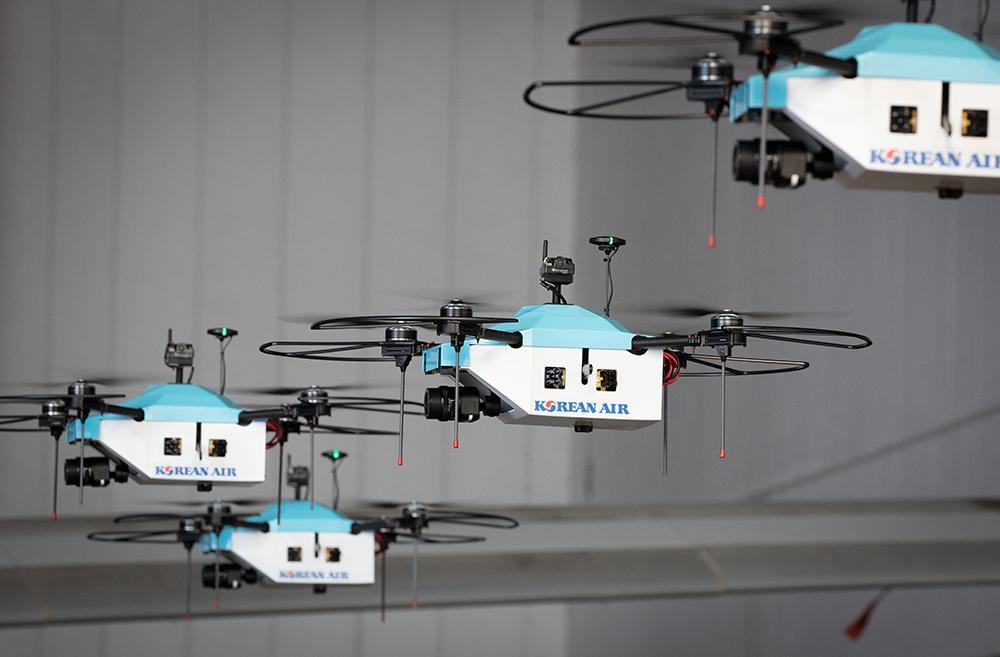
Airlines have been using drones to inspect aircraft for several years, but Korean Air has just demonstrated what it says is the first version of the technology that uses a swarm of drones to improve upon the process. The technology combines indoor autonomous navigation, cloud-based data sharing and artificial intelligence (AI) to visually inspect difficult to reach areas of an aircraft.
In development since 2017 and first demonstrated in December 2021, Korean Air’s drone swarm technology uses four drones to simultaneously inspect an aircraft fuselage. The drones are equipped with high-performance cameras that can identify objects up to one millimeter in size, which the airline says enables detection of micro defects that cannot be seen with the naked eye.
According to Korean Air, the drone swarm technology reduces inspection time by 75% compared to the deployment of a single drone. Compared to manual inspection techniques, it says drone swarms reduce visual inspection time from approximately 10 hours to four hours, a reduction of about 60%.
To program the drones’ paths, Korean Air has developed inspection planning software that enables users to generate optimal inspection plans. An inspector can choose the aircraft model, camera settings and number of drones, then check the flight plan in advance through 3D graphics. The system features redundancies in place so the remaining drones can complete an inspection if one drone malfunctions. The airline has also applied a collision avoidance system and geofencing to maintain safe distances from surrounding facilities and prevent drones from breaking away from the inspection area.

While the drone swarm system can be operated both indoors and outdoors, it is currently only being used inside Korean Air’s hangar, in line with the Korean government regulations.
“Korean Air will need the government’s support in authorizing the technology to inspect aircraft [on] the apron, as we are subject to compliance with relevant no-fly and restricted area drone-flying regulations,” says a spokesperson for the airline. “Korean Air plans to cooperate closely with the authorities going forward in this field.”
Now that Korean Air has demonstrated the technology, it plans to use drone swarm inspections alongside its existing visual inspection procedures to identify user requirements and improve operational procedures. While the carrier has not established a timeframe for full implementation of the technology, it plans to launch AI-based identification by 2024.
The airline also has plans to offer the new inspection services to others once it has been finalized.
“We expect to expand the scope of the drone swarm inspection to other airlines or companies where there is a need, after successfully launching the project within the company,” says the spokesperson.





